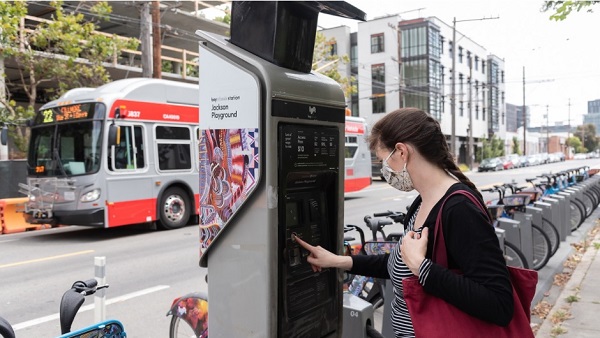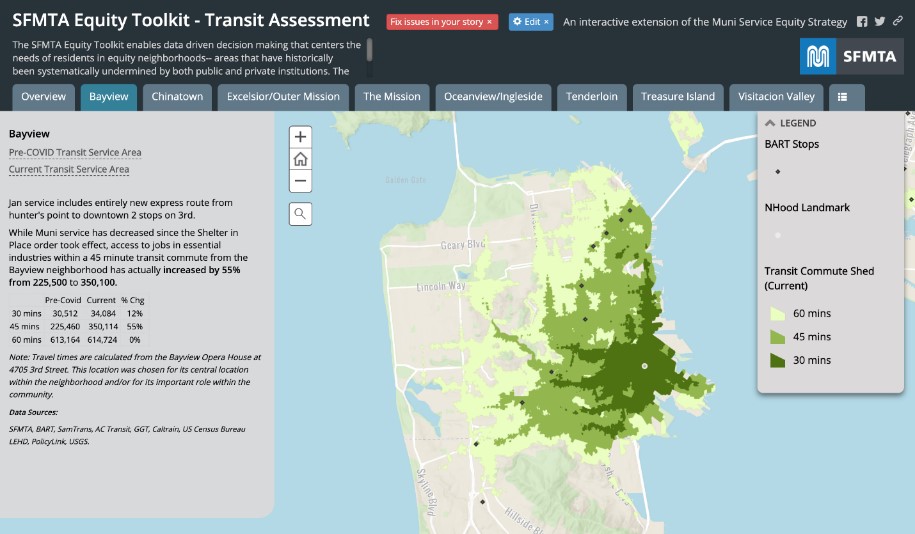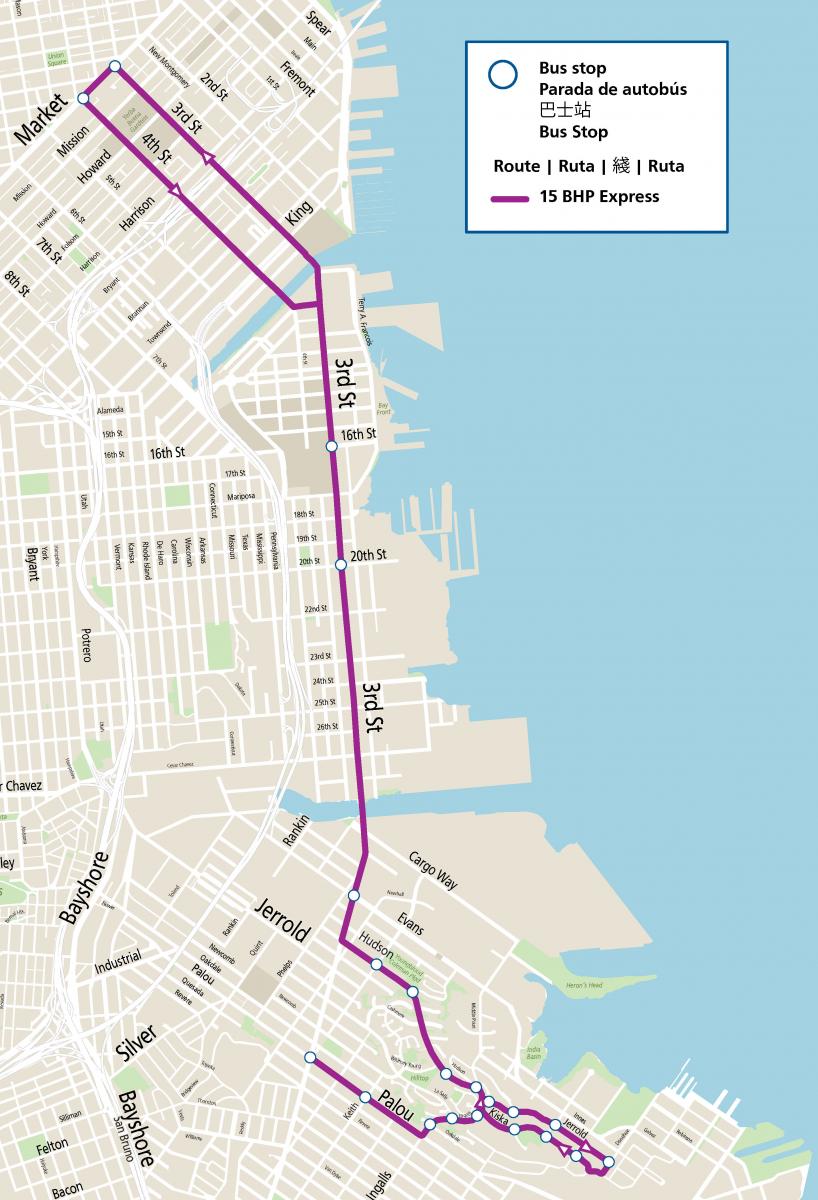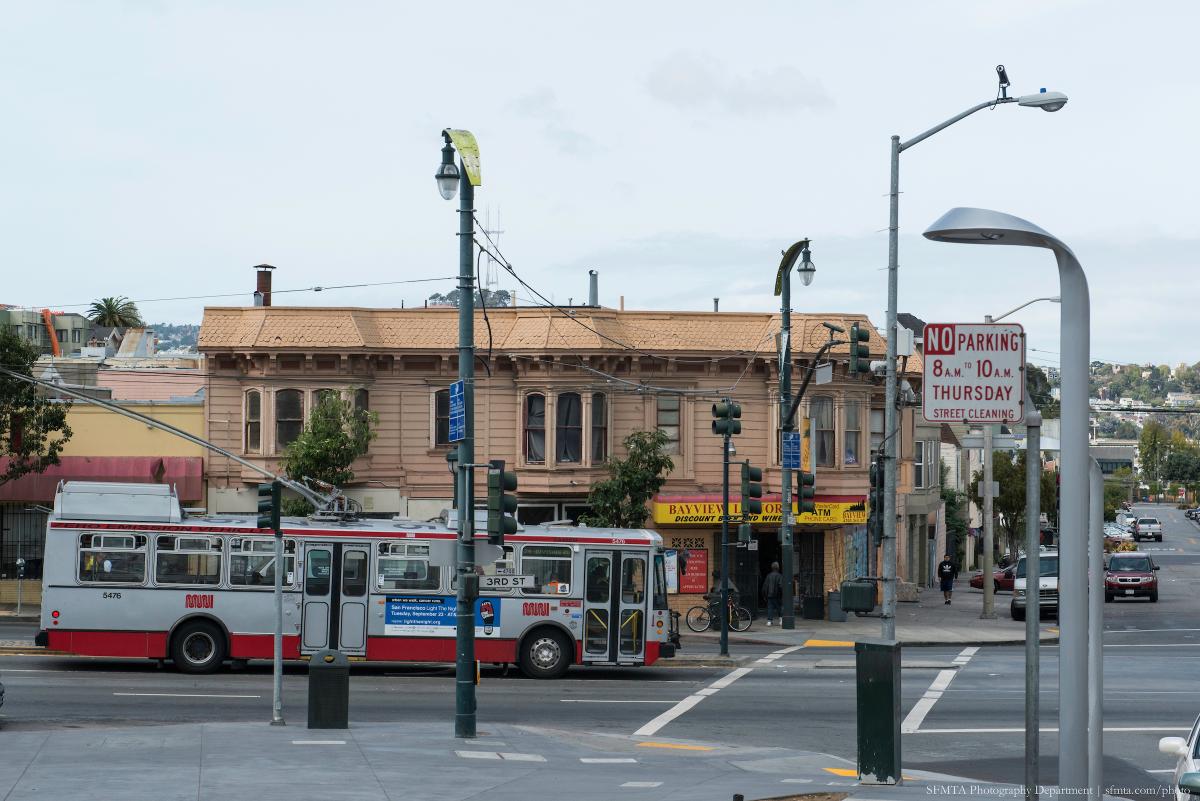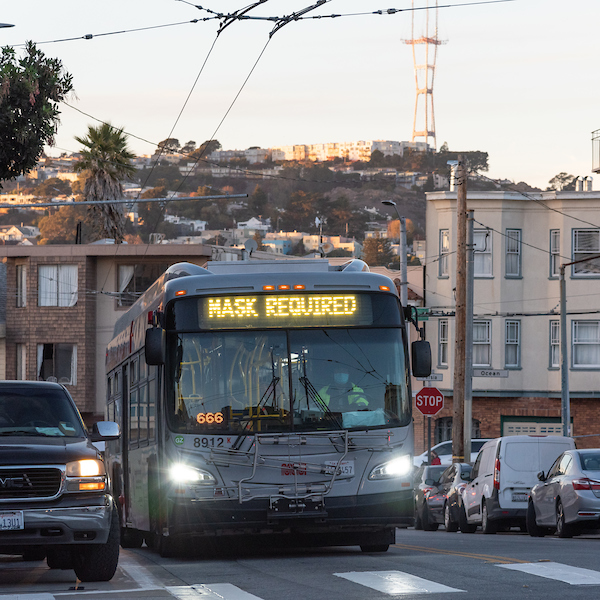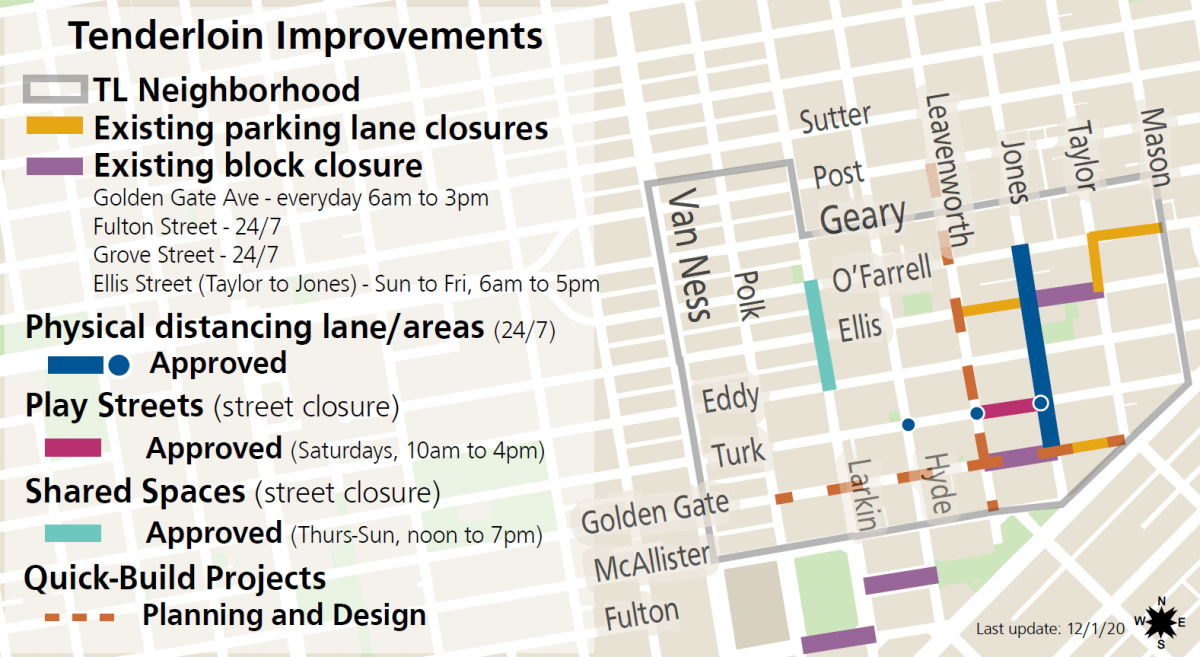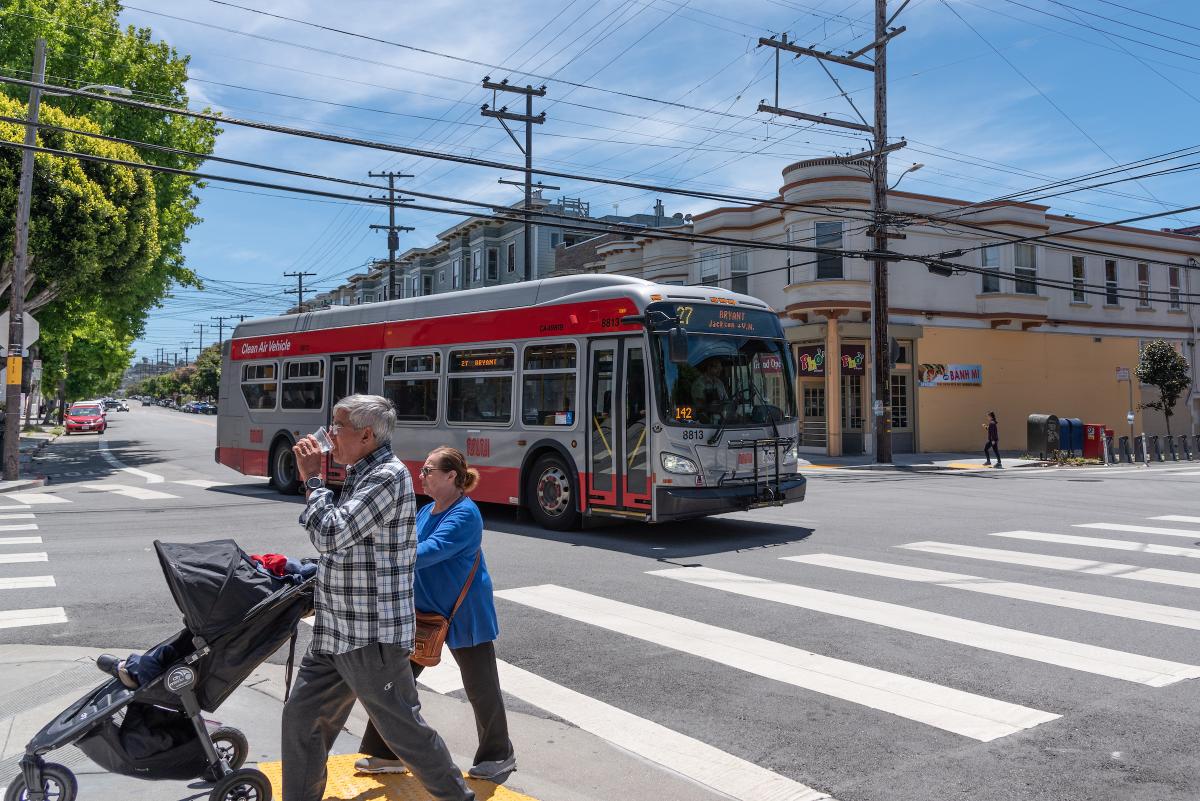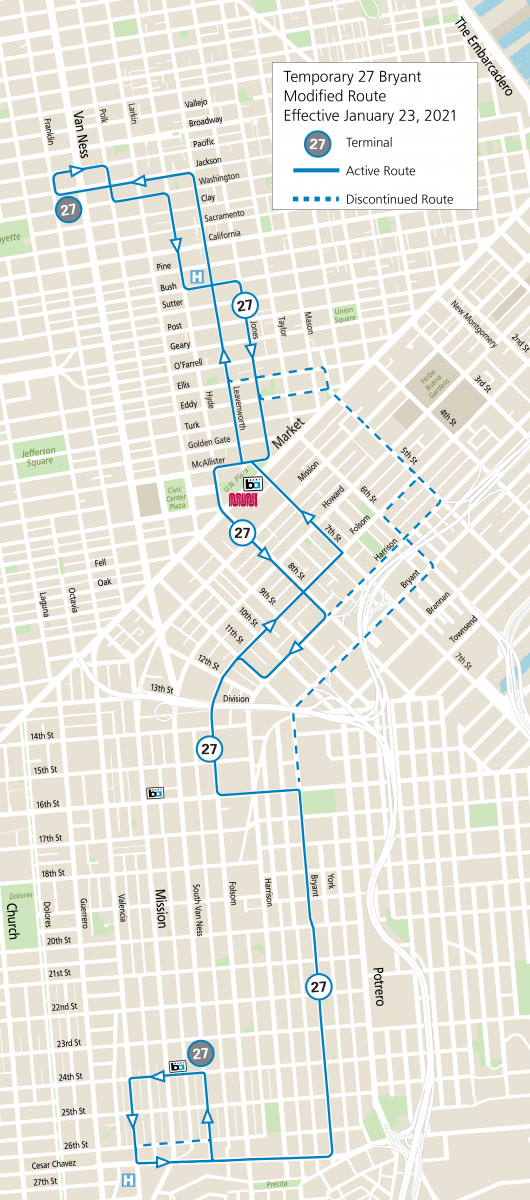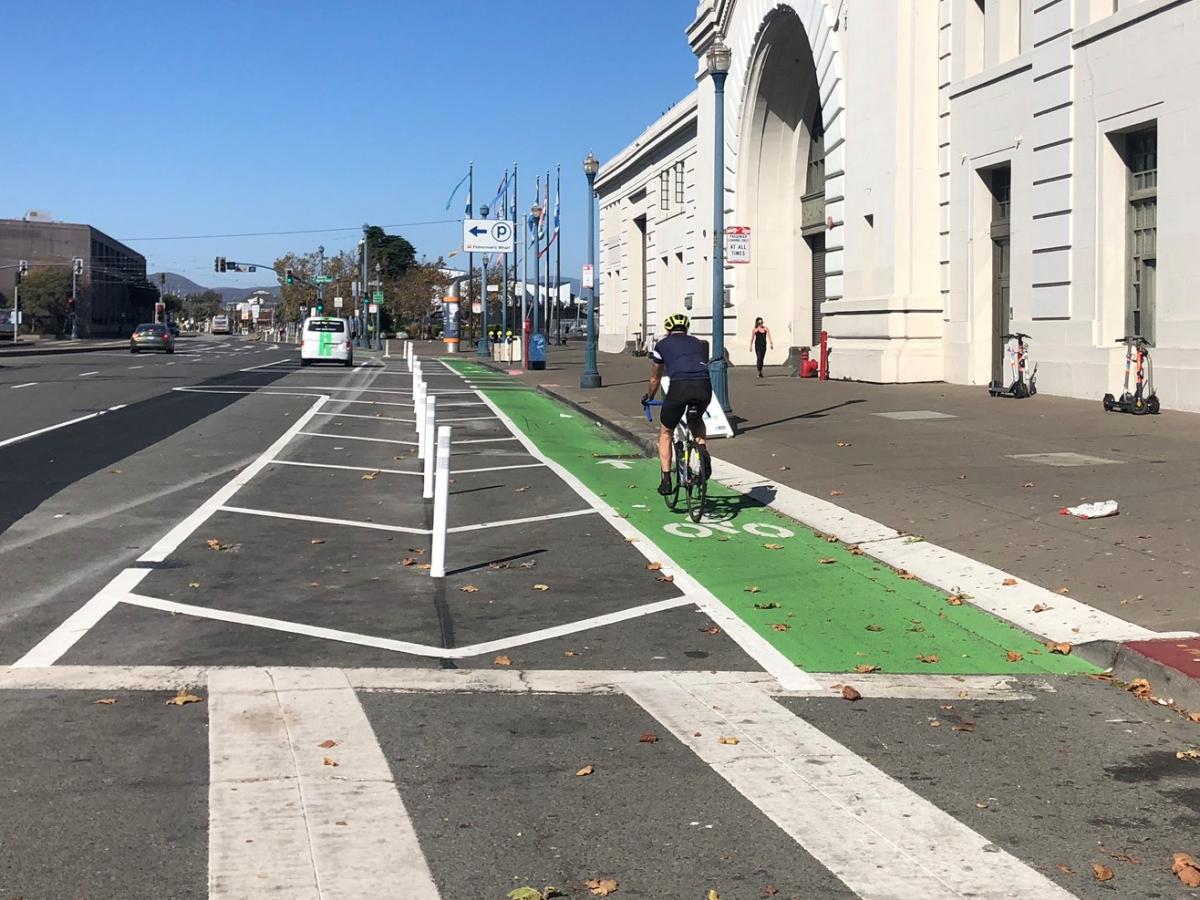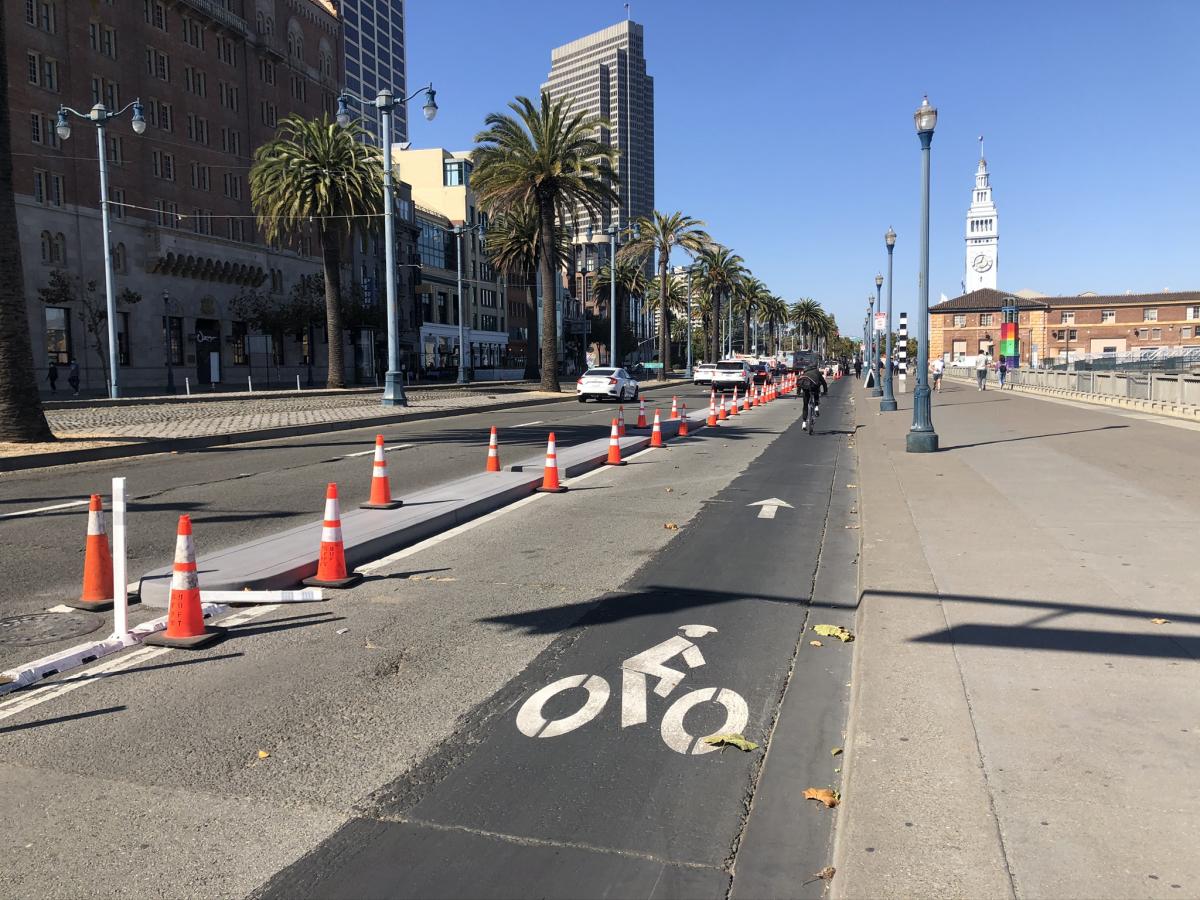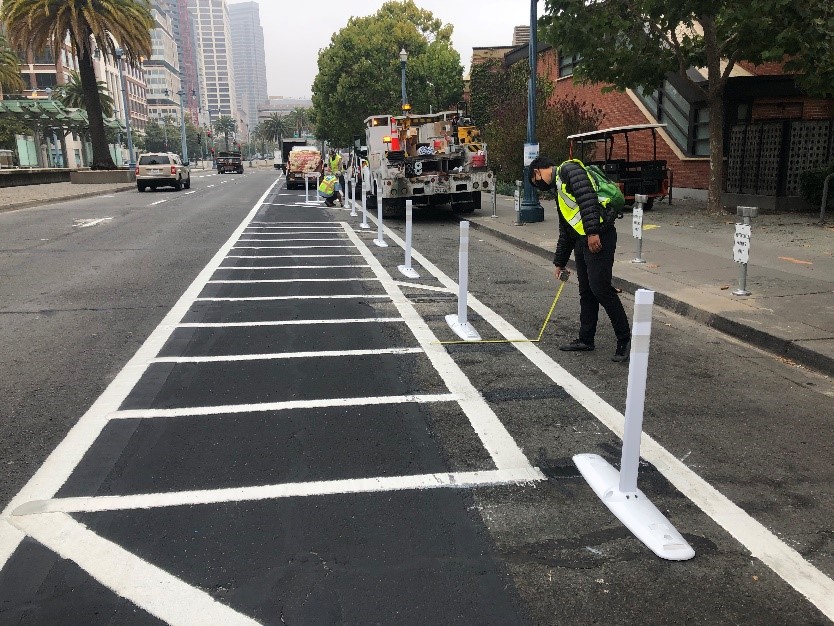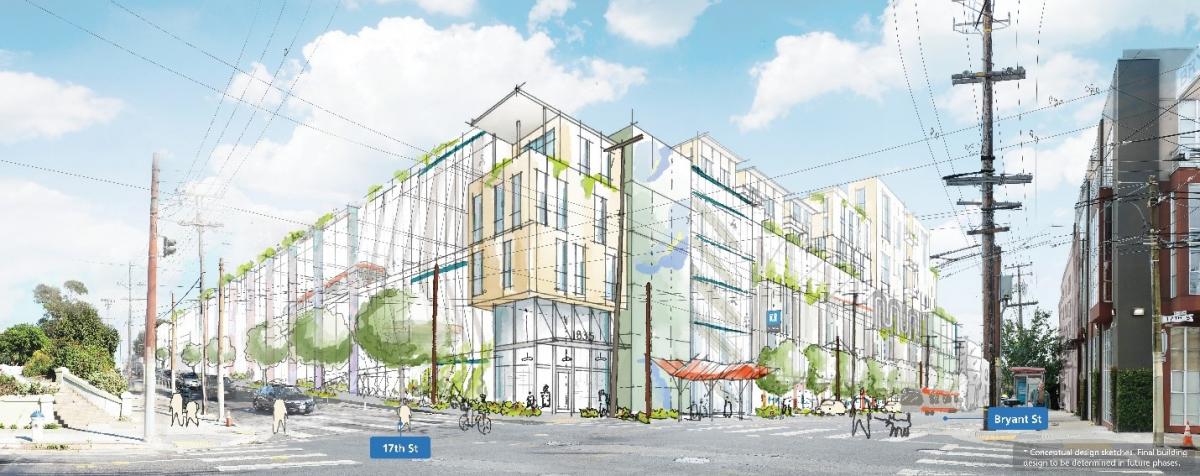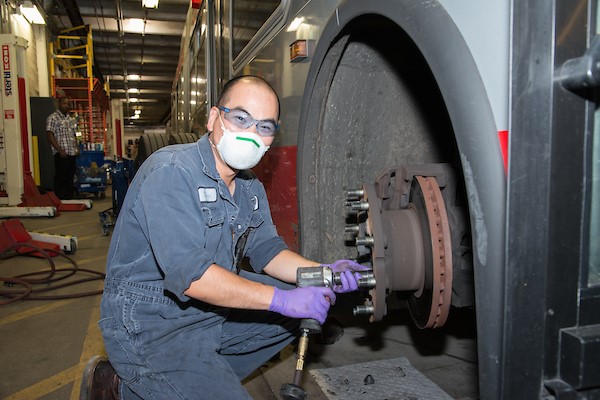Upcoming Muni Service Expansions Phase-in Rail Service, Add Bus Service
By Mariana Maguire
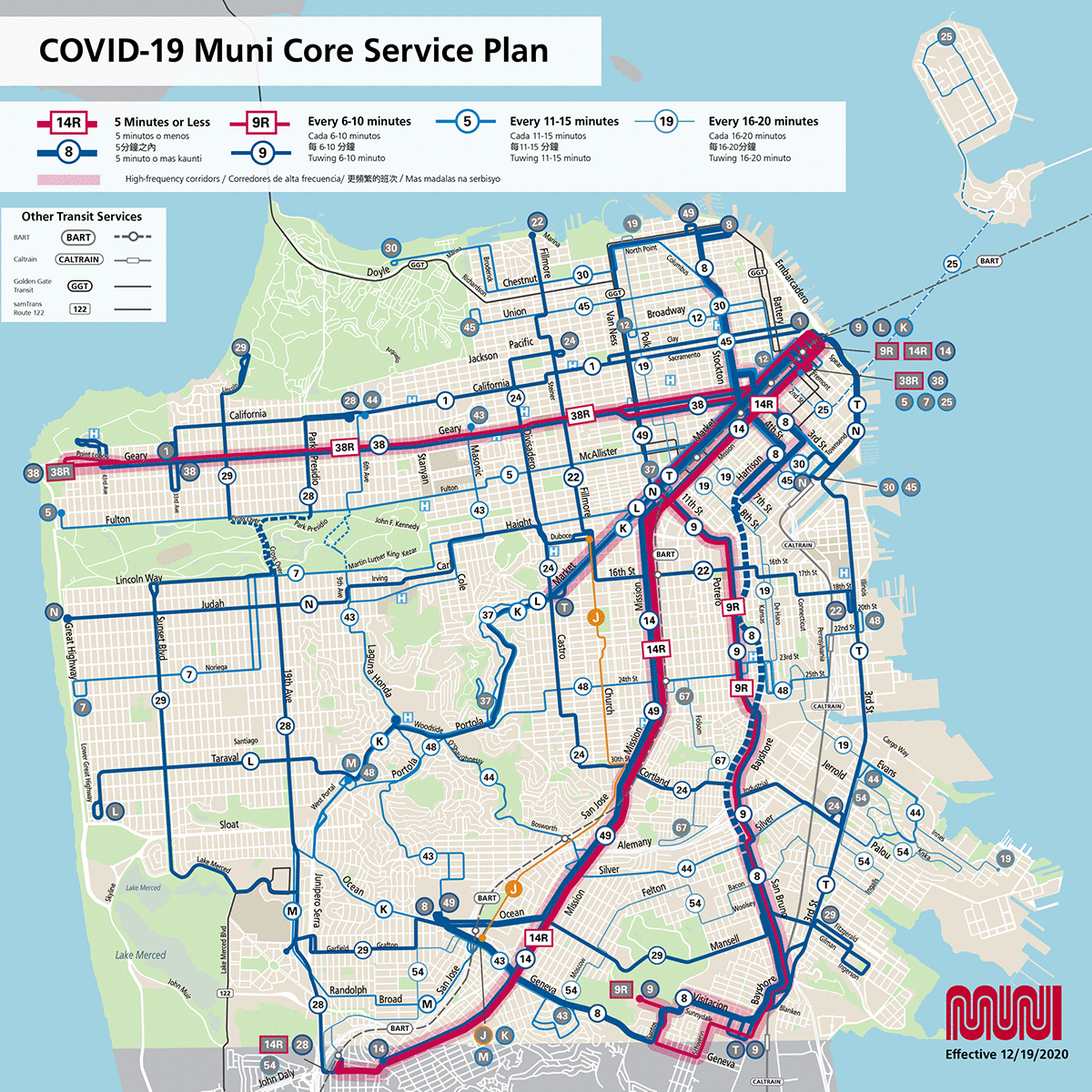
Graphic: Updated core service map, effective December 19, showing the temporary J Church surface rail route.
On Saturday, December 19, the SFMTA will gradually start to bring back Muni Metro service by rail and increase bus service, including resuming several routes based on community feedback.
Muni Metro begins resuming rail service on December 19 with the J Church between Balboa Park Station and Church and Duboce streets. On January 23, the T Third resumes rail service between Sunnydale and Embarcadero Station once safety and operational improvements are finished at Embarcadero Station.
These two rail changes will put more operators back on Muni and free up to 20 buses, allowing us to extend routes, increase frequencies, resume service like the 27 Bryant, and bring two new lines into service: the 55 Dogpatch and the 15 Bayview-Hunters Point Express. The full 33 Ashbury-18th Street will also return to service to provide another cross-town connection.
In February and March 2021, we will aim to bring back the N Judah Metro by rail between La Playa and 6th and King streets, and a shuttle train between Embarcadero and West Portal. We expect the K Ingleside, L Taraval and M Ocean View to remain as bus routes through the spring as subway repairs continue, particularly in the Eureka Curve near Castro Station.
These service changes focus on providing access to essential destinations and services to support San Francisco’s essential workers and economic recovery, especially for communities that depend on transit the most. The 15 Bayview-Hunters Point, 27 Bryant, and 55 Dogpatch are examples of service for these populations and are the result of community engagement and feedback. We continue to work on adding more service on our high-ridership lines and using available vehicles and operators to help relieve crowding.
Service hours will remain approximately 5:00 a.m. to 10:00 p.m. daily unless otherwise noted. Owl network service hours will remain approximately 10:00 p.m. to 5:00 a.m. daily. Subway maintenance will be conducted evenings starting at 8:00 p.m. daily. Bus substitutions will run on Metro lines that enter the subway starting at 8:00 p.m., shifting to Owl service at 10:00 p.m.
Below is the complete list of service changes. Please note that some details are subject to change. The information will be updated accordingly. For the most up to date information with free language assistance and accessibility please call 311.
December 19 Muni Service Changes
J Church Metro Rail
January 23 Muni Service Changes
T Third Metro Rail
- Service between Sunnydale and Embarcadero Station.
- Service will be mostly surface-only on 3rd Street. Vehicles will enter Embarcadero Station, service the station, then turn back. This allows us to provide connections to downtown and Market Street.
- Starting at 8:00 p.m. daily for evening subway maintenance, bus substitutions will provide Muni Metro service and Owl service at 10:00 p.m..
- On weekends, buses will serve the T Third from 5:00 a.m. to 8:00 a.m. between Sunnydale and Steuart Street. Embarcadero Station opens at 8:00 a.m.
1 California (short): Additional service between California and Presidio streets and Clay and Drumm streets, where ridership is highest.
5 Fulton (short): Additional service between Fulton and 8th Avenue and the Salesforce Transit Center, where ridership is highest.
7 Haight-Noriega:
- Due to limited numbers of 60-foot motor coaches, shorter 40-foot coaches will serve the 7 Haight-Noriega on weekends. 60-foot coaches will continue to provide weekday service.
- 60-foot coaches will serve the N Judah Bus daily, which overlaps with the 7 Haight-Noriega on Haight Street.
8AX Bayshore “A” Express (weekdays only): Additional service on the 8AX Bayshore between Kearny Street and Pacific Avenue and Bayshore Boulevard and Visitacion Avenue, where ridership is highest. Instead of peak hour service only, the 8AX Bayshore will be in service all day and in both directions.
12 Pacific: Adjusted headways to provide consistent service during the midday hours when ridership is high.
14 Mission: Additional service and frequency to address crowding.
14R Mission Rapid: Some 14R buses will go to Mission & Lowell streets to relieve terminal congestion due to high frequency at Daly City BART Station.
14 Mission Owl: Longer 60-foot coaches and frequency increase to address crowding.
15 Bayview-Hunters Point Express (BHPX): Community members directly shaped the design and planning of this new line to provide a faster trip between Bayview-Hunters Point and downtown. The route between Palou and 3rd streets to Market and 3rd streets via Hunters Point reflects the community’s travel patterns and priorities. See more information about this new line.
22 Fillmore:
- Additional service to address crowding.
- As part of the completion of the first phase of the 16th Street Improvement Project, the new modified route will travel east on 16th Street and north on 3rd Street to the new terminal on Mission Bay Boulevard North.
- Once the 22 Fillmore moves to serve Mission Bay, the new 55 Dogpatch will begin service to continue to provide bus connectivity for the Dogpatch and Potrero Hill neighborhoods. See more about the 55 Dogpatch below.
27 Bryant:
- The full route will go back into service in response to community feedback and engagement.
- To improve reliability by using temporary emergency transit lanes, the route will be modified to travel southbound on 8th Street between Market and Harrison streets and northbound on 7th Street between Market and Folsom streets. The temporary emergency transit lanes are restricted for Muni service only, so they can keep buses moving even if there is traffic congestion, which helps manage crowding.
- The reroute will maintain access to BART and Muni Metro and will provide a connection to new destinations like FoodsCo on Folsom at 14th Street.
- Over the next few months, SFMTA staff will ask for feedback from community members and evaluate the performance of the 27 Bryant on this modified route.
30 Stockton (short):
- A short line between Caltrain and Van Ness Avenue at North Point Street will add service in segments of the route that consistently experience crowding.
- The 30 Stockton will travel south on 4th Street, west on Harrison Street, south on 5th Street, then east on Townsend Street to its terminal.
30 Stockton (long):
- The extension to Crissy Field and the Presidio connects residents and visitors of San Francisco to an outdoor recreational area via public transit.
- The relocation of the daytime terminal to Crissy Field (at the Sports Basement parking lot) provides enough space for longer 60-foot coaches. These larger coaches have helped alleviate crowding on routes with high ridership.
33 Ashbury:
- The full route will return to service in response to customer feedback about cross-town connections that the route provides to a number of medical facilities.
- During street closure event hours Friday through Sunday on 18th Street between Collingwood and Hartford streets, the 33 Ashbury will use a special event reroute. Check the route page for special event route details.
37 Corbett: The regular route will come back between Parkridge Drive and Burnett Avenue, and Masonic Avenue and Haight Street.
38 Geary: Increased frequency on weekdays and weekends to address crowding.
43 Masonic: The route will be extended slightly to connect to the 1 California at California Street and Masonic Avenue while maintaining the same number of bus resources.
55 Dogpatch: A new route will be added between 16th and Mission streets and 20th and 3rd streets to replace the eastern segment of the 22 Fillmore modified route to Mission Bay. This route was developed with community members from the Dogpatch and Potrero Hill neighborhoods. See more information about this new line.
Published December 08, 2020 at 10:20AM
https://ift.tt/3m1NZYJ
